When learning about the origins of many of the devices designed to enable aging in place, you often find that there’s a personal story involved. That’s certainly the case with Glenn Maxwell. “In 1991 my grandmother fell in her driveway,” he says. “She thought the mailman would be there shortly to help, but he was off that day, so she lay there for about seven hours before his substitute arrived. All she suffered was a little exposure and dehydration, but when we brought her home from the hospital the next day I literally built an alarm for her and told her that she absolutely had to use it.
“She lived at home for six more years, and she used the alarm button three times, but any one of those events would’ve meant the end of her independence if she hadn’t gotten help,” he says. “So yeah, this is personal for me.”
Personal Emergency Response Systems (PERS)
As founder and president of Alert Sentry—located in Lakeville, Mass.—Maxwell has leveraged three decades of experience in the security industry in developing the company’s line of medical alert devices, sold through dealers. The standard system consists of a main console to be centrally placed in the home and a personal help button for the user to wear. “The button can be a necklace or a wrist band,” he explains, “but I’ll be the first to tell you that the necklace is safer because the button can be reached with either hand.”
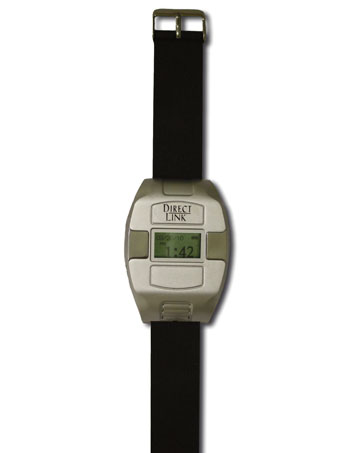
Once the button is pressed the user communicates directly with a trained Alert Sentry operator via the main console. The button still activates the console if the person is beyond speaking range, and help will be sent even if contact isn’t made. Communication can be further enabled with the use of the enhanced system, which allows the user to speak with an operator directly through the pendant. “We also have a belt clip for that model, or a strap to attach it to a walker or wheelchair,” Maxwell says. “You can even answer your phone through the enhanced pendant. It’s really great for active people.”
Some people can be too active, however, and that’s where the Direct Link Care Watch comes in. “We have a standard PERS device that consists of a home base unit and a pendant, and it can be matched with a landline, cell or Internet-based phone system,” according to Kiki Schockling, director of marketing at Cincinnati-based Direct Link, which sells its products through a network of dealers. “Then we have the Care Watch, which provides greater range and is GPS equipped so that help can be obtained while you’re out mowing the grass, for instance. It can also be programmed to alert our Care Center should the user range beyond a programmed perimeter, for those who tend to wander.”
Direct Link also offers a line of both wired and wireless vital sign monitoring devices, such as a weight scale and blood pressure, blood glucose and pulse oximeter monitors. “If a reading is abnormal or exceeds a set threshold, our Care Center operators will call to make sure that everything’s okay,” Schockling explains. “They can also call a designated caregiver based on instructions given when the account is established.”

The company also offers an automated medication dispenser that can be preloaded and set to sound an alarm when it’s time for particular medicines to be taken. Not only does this keep the patient on schedule, it also prevents him or her from taking medications at the wrong time with a handy lockout feature that opens at the prescribed hour. And if the medications are not taken, the Care Center is automatically notified.
LogicMark is another company offering direct communication between users and emergency responders and/or caregivers. Headquartered in Louisville, Ky.—and with dealers located across the United States—President Kevin O’Connor says “the first product the company launched was the Guardian Alert, which would call 911 directly and allow the user to speak directly to the dispatcher. The product line quickly evolved to include the Freedom Alert, which gives the user the option of calling friends or family first with the touch of a button, and then it will dial 911 if nobody answers.”
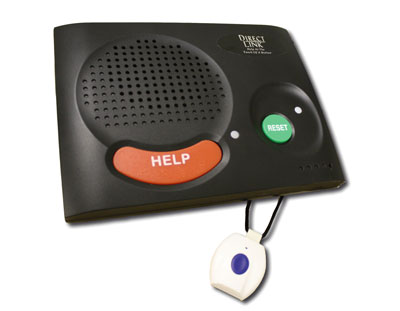
The next product in the portfolio is the Life Sentry, which calls a dealer’s central station where it is answered by a professionally trained operator 24 hours a day. All of the LogicMark products offer a unique patented technology that allows the user to speak and listen directly through the pendant, giving them the ability to use it both in and around their home.
“One thing we’ve focused on is ease of use,” O’Connor says. “I recently installed a system for my mom, for instance, and I said ‘all you have to do is push the button and you’re talking to someone.’ It really is that simple.”
Home Monitoring Systems
When his mother reached her mid-eighties, Bill Kaigler purchased a PERS for her home. One day she pressed the button by mistake and an ambulance soon arrived at her door, along with her son a moment later. “She never wore it again,” he says, “so that’s when I started thinking about an alternative.”
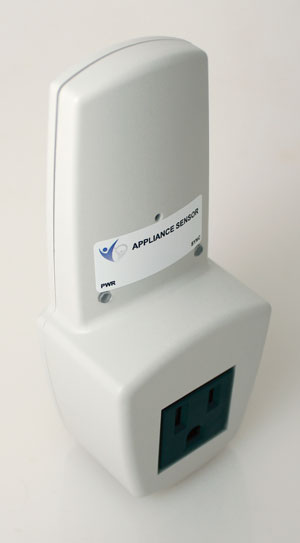
Although he admits that PERS definitely serve a purpose, he envisioned a passive system that required no action by the user. A trained mechanical engineer, Kaigler began developing his own system when he found those on the market at that time to be too complicated. “They all required professional installation, which isn’t available everywhere,” he says. “I wanted to create something that took no expertise to install. Our instructions are only half a page long.”
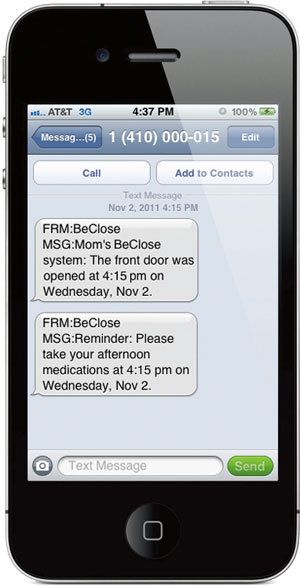
The result is the ConnectCare Senior Monitoring System from Warrendale, Pa.-based NewCare Solutions, which consists of a communication box that is connected to a phone line or Internet modem, wireless “plug and play” sensors for appliances and beds—others for cooking activities and water consumption will be available soon—and the online Caregiver Portal, which allows caregivers to monitor activities and set thresholds for automatic notification via phone, text or e-mail if they are surpassed. A smart-phone app is also available. “An Alert Sentry PERS can also be incorporated into the system in case someone falls and needs to contact the call center for help,” says Kaigler, the company’s president and CEO. “Caregivers are notified of that, as well.”
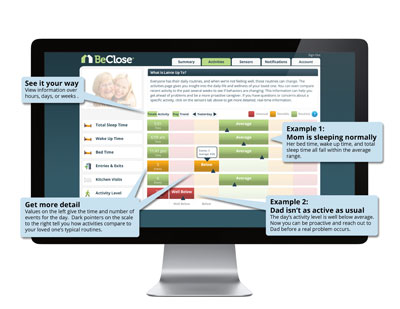
One thing that’s important when it comes to home monitoring systems is that they not be invasive, according to Mark Hanson, cofounder and head of technology and product at BeClose, which is located in Vienna, Va., and sells through authorized affiliates. “Our system is meant to be passive and invisible in the home,” he says. “Most of our users tend to forget the sensors are even there.”
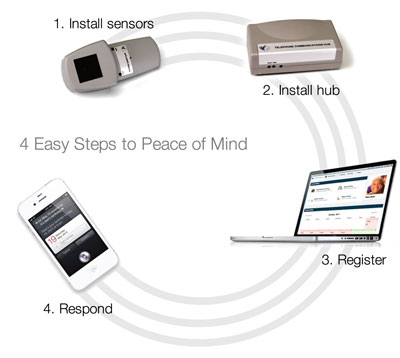
These wireless pressure and motion sensors monitor beds, doors, chairs, toilets, water usage and room activity, beaming data to a base station that only needs to be plugged into an electrical socket—no phone or Internet connection is required—that’s also equipped with a battery for power outages. The system also has a large BeClose Button that can be placed beside the tub, etc., and a pendant that can be worn for emergency calls. Caregivers establish parameters and receive alerts by phone, e-mail or text, allowing them to access the online BeClose Dashboard to review user activities.
“We’ve even begun building ‘intelligence’ into our systems, so that alerts can be sent when established routines are disrupted,” Hanson says, “and it can be programmed to provide alerts when it’s time to take medications or go to an appointment with their doctor.”
Home Medical Monitoring Systems
If there is a thread running through all of these devices and systems, it’s the realization by the designers that if it’s complicated, people won’t use it—especially those of a generation that didn’t grow up surrounded by technology. “One of the unique features of our system is that it can be shared between family and professional caregivers, because we believe they both must be involved,” says Dan Chavez, vice president of marketing for Independa, which is headquartered in La Jolla, Calif., and represented through a growing network of distributors. “And another is that it’s easy and fun to use.”
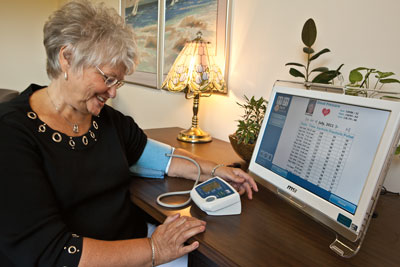
The company accomplishes this with a dedicated tablet called the Angela Social Engagement Companion on which Web sites and various functions are preprogrammed, eliminating confusion by sidestepping URLs, spam and frustrating computer glitches. “Isolation isn’t healthy for anyone, so the Angela allows mom to text, e-mail, share photos, use video chat and solve puzzles without having to go online,” he says. “At the same time it provides health information and issues medication reminders.”
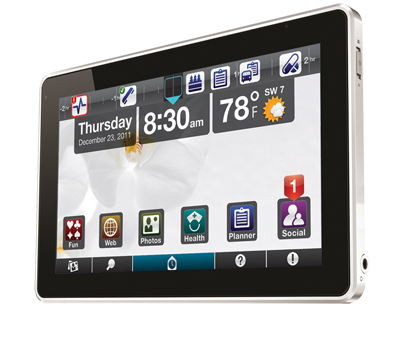
Independa also offers the Artemis system, which gathers data collected by wireless health, activity and safety sensors placed strategically around the home, making it available to others on the cloud-based Caregiver Web App. Health sensors include an ear thermometer, a weight scale, a pulse oximeter, glucometer, pill dispenser and a blood pressure cuff. Activity sensors detect motion, pressure and open doors. Safety sensors check for flooding, smoke and carbon monoxide, as well as toilet usage and room temperature.
Temperature played a central role in the development of the GrandCare System, according to Charlie Hillman, the founder and president of the West Bend, Wis.-based company. In the early 1990s his great aunt was living in a cottage next door to his home. One day she called to tell him she was cold, and on investigating he found that all of her windows were open—in January. “And she’d opened them because there was a strong burning smell and thick smoke,” he recalls, still shaken by the memory. “She’d been experiencing temperature swings, and the furnace was turned up so high that flames were visible. She’d gotten confused, but she didn’t want to bother anybody, which is typical of her generation.”
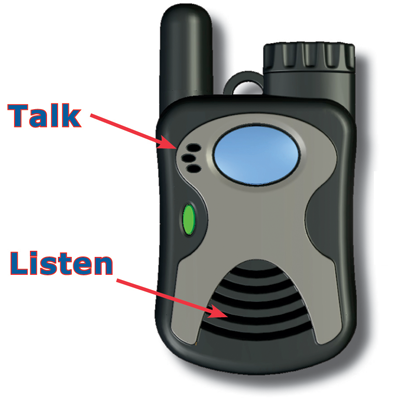
An MIT-trained engineer, Hillman began assembling component parts that he found readily available and had soon installed a pre-GrandCare product in his great aunt’s cottage, enabling her to live independently for the remainder of her life. By 2005 he’d begun beta testing, and the GrandCare System was introduced in 2006.
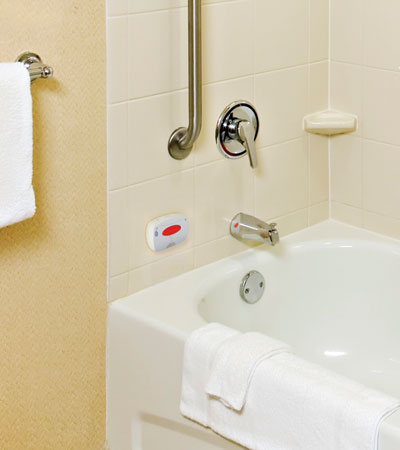
While the system can be tailored toward the user’s specifications, the selection process generally begins by filling out an online assessment form to help determine the best configuration. Local dealers then handle installation, although “it’s well within the capacity of most people,” Hillman says. In addition to motion, pressure, temperature and door sensors, wellness devices include a blood pressure cuff, a weight scale, glucometer and oximeter. Data is transmitted wirelessly to a home server connected to the Internet, which makes the statistics available to caregivers online. Family can also communicate directly with their loved one over the TV or a dedicated touchpad tablet, sending photos, chatting virtually or sending texts and e-mails. Users can also access favorite channels and websites with a single touch or click.
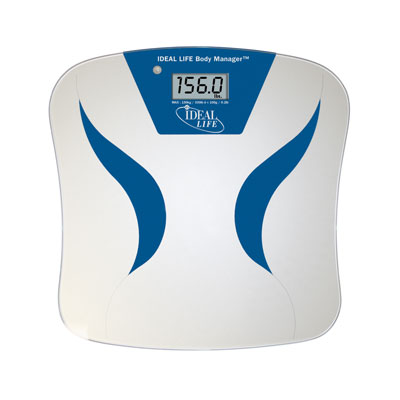
Hillman relies on his wife, Gaytha—the company’s cofounder—to deliver the personal touch. “I’m an engineer, after all, and she’s a female Baby Boomer,” he says with a laugh. “So if it doesn’t make sense to her, it won’t make sense to the majority of caregivers.”
Monitoring the Future
As more individuals choose to remain independent as they age, home monitoring systems will continue to evolve and become increasingly commonplace. They will also be incorporated into the home and daily tasks to the point of invisibility. Think of bath mats that gauge your weight while you shave, mirrors that check blood pressure with a retinal scan, or toothbrushes that take your temperature as you clean your teeth. Analytic software will be developed to become the “first responder,” effectively conducting triage before notifying health-care professionals of a problem.
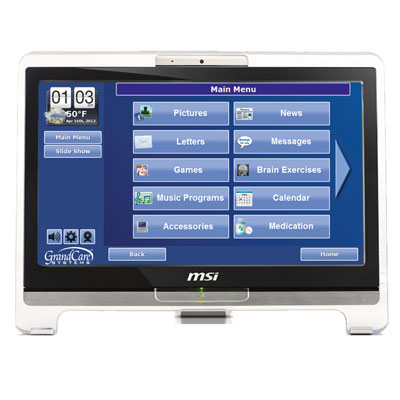
“Although these systems currently provide prompts for people to take their blood pressure or weigh themselves, the key is to remove the need to be reminded at all and to make it automatic,” Hillman says. “And that’s where all this is headed.”




